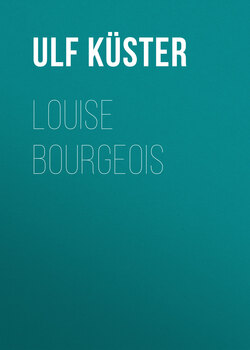Читать книгу Louise Bourgeois - Ulf Küster - Страница 6
На сайте Литреса книга снята с продажи.
Оглавление2 Louise Bourgeois in 1938 in her art gallery in Paris
The exhibition at the Fondation Beyeler, which this little book accompanies, examines how Louise Bourgeois treated her biography and transformed her emotions into objects of art. Characteristic examples of her work are juxtaposed vis-à-vis a selection of classic modern art from the Beyeler Collection. In doing so, Louise Bourgeois’s work is not only embedded in a modernist context, as first accomplished by Alfred Barr when he acquired one of her sculptures in 1951 for the Museum of Modern Art in New York, thus adding it to the canon of modernism he had codified. It also becomes increasingly clear that she, in a peculiar fashion, surmounted modern art as an epoch in her oeuvre and bridged the gap to the art of our times and beyond.
During my research, the clipping of an exhibition review published on October 1, 1994 in the Frankfurter Allgemeine Zeitung fell out of a book I had been perusing. It concerned a Bourgeois exhibition that was then on show at the Kestner-Gesellschaft in Hanover. Under the heading “Auguste Rodin in Babyland,” the author wrote critically about the artist’s work, concluding his damming review with the sentence: “Every object mutters to itself: ‘I signify something.’” At that time, in 1994, this might have been regarded as a shortcoming. But today it is precisely this diversity of meaning in Louise Bourgeois’s art that is so fascinating: she not only dissolved the antithesis between figuration and abstraction that was long so central to modernism; she also contributed to giving modern art an idiosyncratic layer of interpretation accompanying the purely visible layer. The message of her art remains open to numerous readings. Louise Bourgeois by all means regarded the subjective, open view of her works as correct, writing in a note that probably dates from the late nineteen-eighties:
People ask me—what do
you mean—and I answer
what do you think of when
you see the image.7
The book at hand can be read as a general introduction to Louise Bourgeois’s life and art as well as used as a guide on the journey to Louise Bourgeois’s person and her work as they are presented at the Fondation Beyeler, starting outdoors in front of the museum and ending up deep inside the building’s interior.
